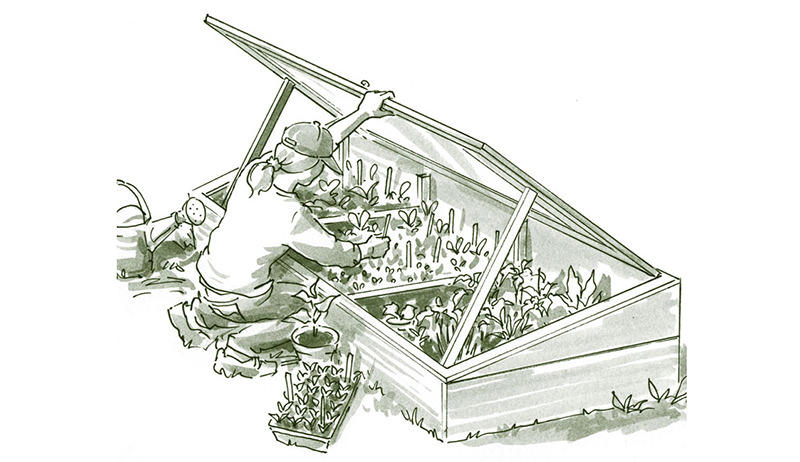
It’s that time of year again: Seed-starting time! Last year was my first real go at starting seeds since I began gardening many years before. (That’s the great thing about gardening—you can always start with the skills and tools you have and build from there.) I kept my growing seedlings in our farm house’s solar room, which worked out really well for the plants, but not so much for us. They became a bit of a logistical problem for us because they blocked the house entrance from our back door. There also wasn’t anywhere for water to drain when we watered them, so we put plastic-tote lids under each of the trays, which became messy.
While this strategy worked, and Mr. B and I had plenty of baby plants to put into the garden once the weather turned warm, we always look to improve our living space and our gardening operation, particularly now that we have a little one in tow. So this year, we built a baby-plant incubator.
Mission baby-plant housing became a project for me and our friend who also gardens on our land. Originally, we set out to build a greenhouse, but once we started thinking about where to place it, our plans changed. Our land is very hilly—our house sits right in the middle of a hill—so finding a convenient flat spot for a larger structure became problematic, especially when thinking about plans Mr. B and I have for some areas around the house. We settled on building a cold frame for several reasons:
- We could source most of the cold frame materials from what Mr. B and I already have, and the rest would be fairly inexpensive.
- A cold frame would be easier to stabilize on a hill near the house, where we have ready access to a water source and can easily bring the plants inside if temperatures drop.
- The cold frame’s smaller size makes it easier to move should we ever need to.
Plenty of plans for building a cold frame exist around the internet and in gardening books, so I—with my limited construction skills—won’t go into detail about how we built it. If you’re unfamiliar with cold frames, they are basically boxes with a windows attached to the top to function as mini greenhouses. The idea is that we’d place the cold frame on a south-facing slope to make use of the sun’s warmth while the weather is still chilly. On days when temperatures are warm, we can prop open the window to let in some air flow.
It’s always exciting for me to try something new in gardening, and I’m eager to see whether the cold frame offers what we need to get seeds started this year. Once the white powder clears out from our first-day-of-spring snowfall (March sure is going out like a lion this year), it will be time to get planting.




